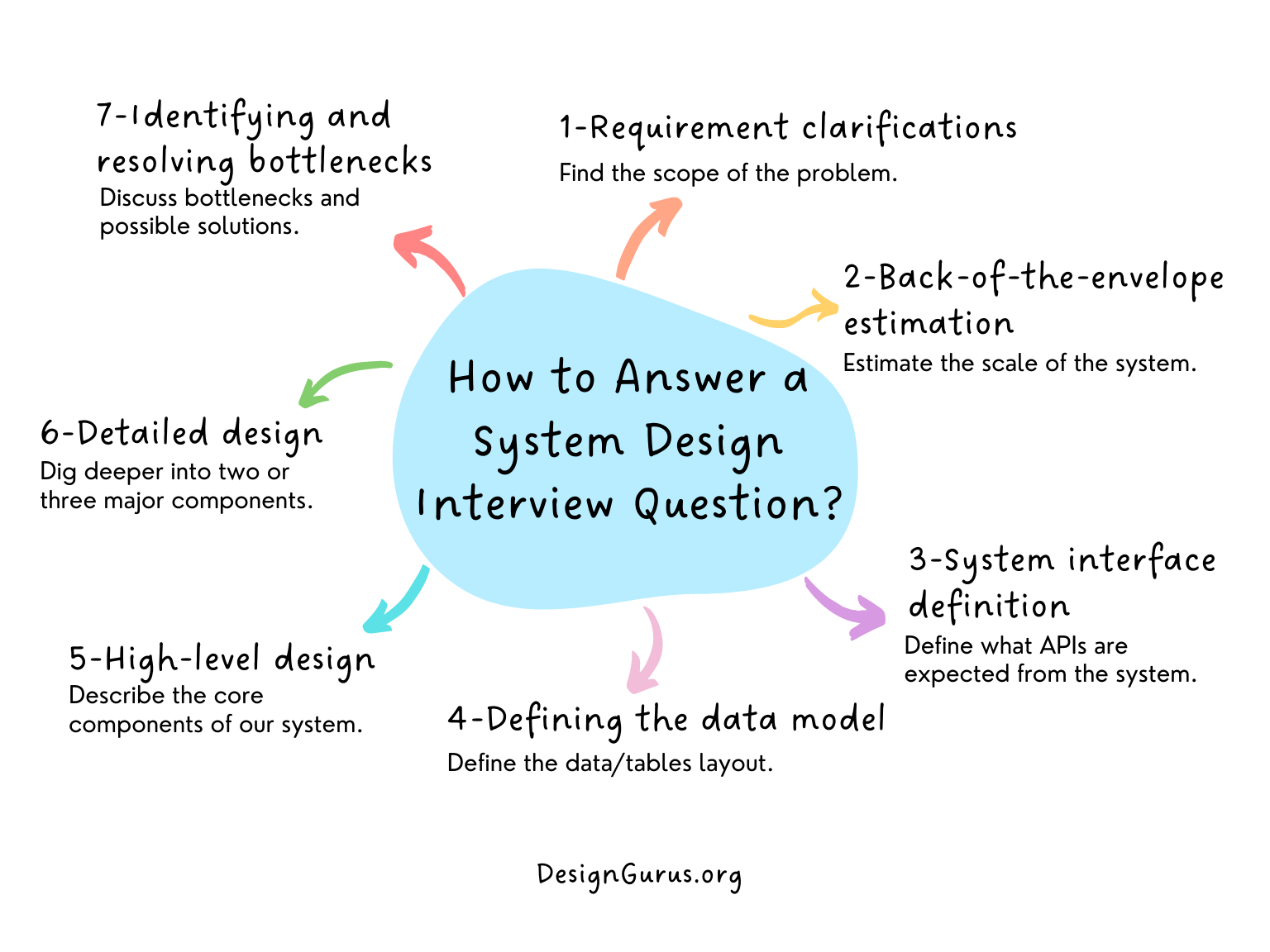Why Is It Hard to Horizontally Scale SQL Databases?
In the dynamic landscape of databases, the debate between SQL and NoSQL databases has been a pivotal discussion point for developers and software engineers alike. As a budding software engineer preparing for system design interviews, it's essential to grasp not only the fundamental differences between these two types of databases but also the intricacies involved in scaling them. Specifically, understanding the challenges associated with horizontally scaling SQL databases can give you an edge in your interviews and professional development.
Horizontal scaling, or sharding, is often spotlighted for its ability to distribute a database across multiple machines, thereby enhancing performance and providing room for growth. However, this process is not as straightforward as it might seem, especially for SQL databases. Why is that the case? The reasons are deeply rooted in the inherent properties and design principles of relational databases.
Throughout this blog post, we will delve into the aspects that make horizontal scaling a challenge for SQL databases. From the stringent requirements of maintaining ACID properties to the complexities of distributed transactions and joins—each factor plays a significant role in why scaling out might not be as seamless as scaling up.
Before we dive deeper into the subject, let's briefly touch on the necessity of this topic. System design interviews often put a spotlight on scalability, requiring candidates to showcase their ability to handle growing data and traffic. A strong understanding of horizontal scaling’s challenges in SQL databases will demonstrate your comprehensive grasp of system architecture and your readiness to tackle real-world problems.
The Fundamentals of Database Scaling
Before we jump into the complexities of horizontal scaling, it's crucial to understand what database scaling entails. Database scaling can be broadly categorized into two types: vertical scaling and horizontal scaling. Vertical scaling, also known as scaling up, involves adding more power to your existing machine—in other words, upgrading the CPU, RAM, or storage. It's akin to moving from a standard sedan to a sports car; you enhance the capabilities of your single vehicle.
In contrast, horizontal scaling, or scaling out, is like adding more cars to a train. You distribute your database load across multiple machines or nodes. Each node contains a portion of the database, and together, they form a single logical database. Horizontal scaling is highly sought after for its potential to handle massive amounts of data and traffic by simply adding more nodes to the infrastructure.
SQL databases, also known as relational databases, are designed with a focus on relationships and ACID properties to ensure reliable transactions. They excel in handling complex queries, enforcing data integrity, and providing a structured schema for data. SQL databases are traditionally scaled vertically by enhancing the hardware capabilities of the server they run on.
However, the explosive growth of data in today's digital world has pushed the limits of vertical scaling, bringing horizontal scaling to the forefront. While vertical scaling is often simpler (just beef up your server), it's inherently limited by the maximum specifications of hardware and can become prohibitively expensive.
The Intricacies of Horizontal Scaling in SQL
Horizontal scaling, while advantageous for managing larger loads and providing fault tolerance, introduces several complexities when applied to SQL databases. This is primarily due to the relational nature and the stringent consistency models SQL databases adhere to. Let’s unpack these intricacies one by one.
1. ACID Compliance Across Distributed Systems
The ACID properties (Atomicity, Consistency, Isolation, Durability) are the cornerstone of SQL databases, ensuring reliable processing of transactions. Maintaining these properties across a distributed system can be akin to conducting an orchestra where each musician is in a different time zone.
Atomicity requires that each transaction is all or nothing: if one part of a transaction fails, the entire transaction fails. In a distributed system, ensuring that a partially completed transaction doesn't leave the database in an inconsistent state requires complex coordination across all nodes involved.
Consistency ensures that each transaction brings the database from one valid state to another, maintaining all predefined rules, including constraints and cascades. When data is spread out across multiple nodes, achieving this consistency after every transaction becomes a much more daunting task.
Isolation means that concurrent transactions occur as if they were happening sequentially, which can be particularly challenging to enforce in distributed databases without significant performance penalties.
Durability, the guarantee that once a transaction has been committed, it will remain so, becomes complex when ensuring that each node in the distributed system has successfully saved the transaction despite potential failures.
Example of a transaction spanning multiple nodes:
Imagine a banking system with accounts distributed across different shards. If a customer wants to transfer money from one account to another, and each account is on a different shard, the transaction must be atomic across all involved shards. If the debit operation succeeds on one shard but the credit operation fails on another due to a node failure, the system must roll back the successful operation to maintain atomicity. Achieving this without incurring high latency and ensuring durability if a node goes down mid-transaction is challenging.
2. The Complications of Distributed Joins
SQL databases are renowned for their ability to perform complex joins efficiently. However, when you distribute tables across different nodes, these operations become significantly more complicated.
Consider a simple join operation between the Orders table and the OrderDetails table to compile complete order records. If these tables are sharded differently, perhaps by OrderID in one case and ProductID in another, the database must now find and bring together the relevant pieces of data from across multiple nodes to answer a query. This can lead to a lot of data movement over the network, which is far slower than local data retrieval, and can become a severe bottleneck.
Thus, horizontal scaling introduces a level of complexity that requires SQL databases to go beyond their comfort zone, adapting mechanisms that can handle distributed transactions and joins without compromising on the performance and reliability that they are known for.
With a clearer understanding of how ACID properties and joins pose significant challenges in horizontal scaling, we can further explore how transactions across shards amplify these difficulties.
3. Transactions Across Shards
In a horizontally scaled SQL database, transactions pose a particularly challenging problem. Sharding splits a database into smaller, more manageable pieces, but it also distributes transactions over multiple nodes. To maintain the integrity of transactions across these shards is like trying to synchronize swimmers in a relay race across different pools; they need to start and finish as if they were in the same lane.
Ensuring Atomicity and Durability
Atomicity requires that a transaction on a distributed database must be all-or-nothing on every shard it touches. This is where two-phase commit protocols often come into play, which add overhead and complexity. If a transaction needs to write to multiple shards, the system has to prepare all involved nodes for the transaction, ensure that each node can commit the transaction, and then finalize (or roll back) the transaction everywhere at once. It's a delicate dance that requires precise coordination.
Durability is also a challenge because once a transaction is committed, it must be guaranteed to survive any subsequent system failures. In a single-node database, this is relatively straightforward, but when data is distributed, a failure in one node could mean a loss of transaction data unless there are robust replication and recovery mechanisms in place.
Example with Real Tables:
Let's say we have a Users table and a Purchases table in an e-commerce database. The Users table is sharded by UserID, and the Purchases table by PurchaseID. If a user wants to update their shipping address and place an order simultaneously, this transaction would involve writing to shards on different nodes. If the address update is successful but the order placement is not, the system must be able to revert the address update to maintain atomicity, despite the actions occurring on different shards.
4. Ensuring Data Consistency
Data consistency in distributed SQL databases is another daunting task. Each shard must not only be an accurate source of truth on its own but also stay consistent with the rest of the system. Synchronizing this data without incurring substantial delays or creating conflicts requires advanced techniques like distributed locks or consensus algorithms, which can further complicate the architecture and reduce system performance.
Impact of Network Latency
In distributed systems, network latency is the hidden gremlin that can disrupt even the best-designed transaction protocols. Since each shard might reside on a different server, possibly in different geographical locations, the time it takes to communicate between shards can introduce delays that affect the responsiveness of the database.
The complexities of managing transactions across shards illustrate the significant hurdles that SQL databases face when scaling horizontally. This level of complexity requires a careful balance between maintaining the ACID properties and delivering the performance users expect from their database systems.
5. Sharding Strategies and Their Pitfalls
Sharding is the process of splitting a large database into smaller, more manageable pieces, but it's not without its pitfalls. Choosing the right sharding strategy is crucial because it can have a profound impact on a database's performance and reliability. Let's explore the common sharding strategies and the challenges they bring.
The Balancing Act of Data Distribution
One of the main goals of sharding is to distribute data evenly across all nodes. However, achieving this balance is often easier said than done. If the data is not distributed evenly, some shards (or nodes) may become hotspots that receive a disproportionate amount of queries and load, leading to performance bottlenecks.
Example of sharding a Users table:
Suppose we have a Users table that we decide to shard based on the user's last name. At first glance, this might seem like a reasonable approach. However, certain last names are more common than others, which could result in uneven data distribution. For example, a shard responsible for last names starting with "Smith" might be overwhelmed with data and requests, while another shard for "Zabinski" might be underutilized.
The Pitfalls of Shard Key Selection
Selecting the right shard key is crucial. If the shard key doesn't align with the query patterns, it can lead to inefficient querying and increased latency. For instance, if a common query involves fetching user data by location, but the data is sharded by user ID, this mismatch can result in cross-shard queries that are significantly slower than if the data were sharded by location to begin with.
The Hurdles of Resharding
As data grows or usage patterns change, the initial sharding scheme might become suboptimal. Resharding, or redistributing the data across shards, is a complex and risky operation that can involve significant downtime and has to be carefully planned to avoid data inconsistency or loss.
Schema Changes in a Sharded Environment
Making schema changes in a distributed SQL database is like trying to remodel a house while it's being lived in. It's complicated. For example, adding a new column or changing an index requires these changes to be applied across all shards in a coordinated manner, ensuring that at no point is the database schema out of sync.
With this understanding of sharding strategies and their associated challenges, it's clear that while sharding can provide scalability benefits, it also introduces complexity that needs to be carefully managed.
6. Enforcing Data Integrity Over Multiple Servers
Enforcing data integrity in a distributed SQL database environment is like trying to maintain law and order in a fast-growing, bustling metropolis. As the city expands, the complexity of managing its governance increases. Similarly, as a database scales out, ensuring that data remains consistent and that integrity constraints are enforced across all shards becomes a formidable task.
Foreign Key Constraints
Foreign key constraints are essential for maintaining referential integrity in relational databases. They ensure that relationships between tables remain consistent. However, in a sharded environment, these relationships can span across multiple servers, complicating the enforcement of these constraints.
For instance, consider two tables: Customers and Orders. The Orders table has a foreign key that references the CustomerID in the Customers table.
CREATE TABLE Customers ( CustomerID int NOT NULL, LastName varchar(255) NOT NULL, FirstName varchar(255), ... PRIMARY KEY (CustomerID) ); CREATE TABLE Orders ( OrderID int NOT NULL, CustomerID int, OrderDate date NOT NULL, ... PRIMARY KEY (OrderID), FOREIGN KEY (CustomerID) REFERENCES Customers(CustomerID) );
In a non-sharded database, when you insert a new order, the database engine checks that the CustomerID exists. In a sharded database, the Customers and Orders tables might be on different shards, possibly in different physical locations. The database must ensure that the CustomerID exists on another shard, which requires inter-node communication and can significantly slow down the transaction.
Unique Constraints
Maintaining unique constraints, like a unique email address for each customer, also becomes challenging when data is distributed. When you insert a new record, the system must search across all shards to ensure that the email address hasn't been used, which can be a time-consuming operation.
Cascading Updates and Deletes
Cascading actions are another relational feature where changes in one table automatically cause changes in another. If a Customer record is deleted, for example, all related Orders should also be deleted (if a cascading delete has been set up). In a sharded database, this operation requires coordination across all shards that hold Orders for that Customer, complicating the deletion process and increasing the potential for errors.
Consistency Levels
To manage the complexity, distributed systems often use different consistency levels. Instead of striving for strict consistency (where data is guaranteed to be the same across all nodes at all times), systems might aim for eventual consistency (where data will become consistent across all nodes at some point in the future). However, this can lead to temporary data anomalies, which may not be acceptable for all applications.
In the context of system design interviews, understanding these constraints and the associated trade-offs is crucial. Interviewers will look for candidates who not only recognize the scalability challenges but also appreciate the complexities involved in maintaining data integrity across a distributed system.
Mitigation Strategies for SQL Database Horizontal Scaling
While the challenges of horizontally scaling SQL databases are significant, various strategies can mitigate these issues. These tactics aim to balance the inherent complexities with performance needs.
1. Partitioning and Federated Databases
One approach to handling the complexities of sharding is to use partitioning within the same database or federating databases. This way, data is split across different tables or databases, but still under a unified system that can manage cross-partition queries and transactions more efficiently.
2. Application-Level Sharding
Some of the complexities can be offloaded to the application level. By designing the application to be aware of the sharding strategy, it can direct queries to the appropriate shard, thereby reducing the need for cross-shard transactions and joins. This, however, puts additional burden on the application developers and may lead to a more complex application logic.
3. Consistent Hashing
Consistent hashing is a technique used to distribute data evenly across shards and minimize the amount of data that needs to be moved when shards are added or removed. This method can help maintain balanced shards and reduce the hotspots that lead to performance bottlenecks.
4. Database Middleware
Another strategy is to use middleware solutions that sit between the application and database layers. These solutions can manage the complexity of cross-node transactions, joins, and other database operations. They provide a more transparent sharding mechanism, which can make applications simpler and more maintainable.
5. Denormalization
Denormalization involves intentionally duplicating data to reduce the need for complex joins. While this can increase data redundancy and storage requirements, it can also improve query performance in a distributed database system.
6. Polyglot Persistence
This approach uses different database systems for different types of data or queries. For instance, transactional data that benefits from ACID properties might remain on a SQL database, while other types of data that can be easily partitioned or don't require complex joins might be moved to [NoSQL databases](https://www.designgurus.io/blog/no-slq-database] that are more amenable to horizontal scaling.
7. Managing Data Integrity
To handle the complexity of foreign key constraints and maintain data integrity, some systems might relax referential integrity constraints or handle them at the application level. This requires careful design to prevent data anomalies but can significantly improve performance.
8. Geo-Partitioning
For global applications, data can be partitioned geographically. This keeps data close to where it is used most often, reducing latency and improving user experience. Geo-partitioning can also help with compliance with local data regulations.
9. Handling Schema Changes
Tools like database migration frameworks can manage schema changes across all shards to minimize the complexity and risk associated with these operations.
By understanding these mitigation strategies, system designers can better architect scalable SQL database systems that balance the trade-offs between consistency, availability, performance, and complexity.
Conclusion: Navigating the Complexities of Horizontally Scaling SQL Databases
Scaling SQL databases horizontally is not a quest for the faint of heart. It's a challenging task that requires a fine blend of strategic planning, technical acumen, and a willingness to balance trade-offs. As we've explored, the challenges include managing transactions across shards, maintaining data integrity, ensuring consistency, and the complexities introduced by foreign key constraints and schema changes.
However, with challenges come opportunities. The strategies to mitigate these difficulties—such as partitioning, database middleware, denormalization, and others—provide system designers with a toolkit to navigate the complexities. Understanding these tools and when to apply them is crucial for any software engineer aiming to design robust, scalable systems.
In a system design interview, articulating these challenges and solutions can demonstrate a deep understanding of distributed systems and an ability to tackle real-world scalability issues. It's essential to convey not only the theoretical knowledge but also a practical sense of how to apply these concepts in actual system architectures.
Key Insights for System Design Interviews:
- Understand Your Trade-offs: Clearly articulate the trade-offs involved in horizontal scaling, such as consistency versus performance, and know when to apply different strategies.
- Know Your Patterns and Anti-Patterns: Be familiar with common query patterns and how they align with your sharding strategy to avoid pitfalls like hotspots and cross-shard transactions.
- Think Beyond the Database: Consider how application-level changes, caching, and data access patterns affect database performance and scalability.
- Keep Evolving: A system that scales horizontally may need to evolve its sharding strategy and infrastructure as it grows. Be prepared to discuss how to handle resharding and schema migrations.
- Emphasize Testing and Monitoring: Highlight the importance of testing at scale and monitoring performance to ensure that the system meets its scalability objectives.
In conclusion, horizontally scaling SQL databases is a complex task riddled with technical hurdles. But with a thoughtful approach and a comprehensive set of strategies, these challenges can be overcome, leading to scalable, efficient, and reliable database systems. Remember, a good system design is not just about meeting the current requirements but also about anticipating growth and change.
In contrast, NoSQL databases are often designed from the ground up to support horizontal scaling. They typically offer more flexible data models (like document, key-value, wide-column, or graph formats) and are designed to easily distribute data across many servers. However, they might sacrifice some of the ACID properties, especially consistency, to achieve better performance and scalability.
Frequently Asked Questions (FAQs) on Horizontally Scaling SQL Databases
Q1: Why can't traditional SQL databases easily scale horizontally like NoSQL databases?
A1: Traditional SQL databases are designed with strong consistency and ACID (Atomicity, Consistency, Isolation, Durability) properties in mind. They excel in situations where transactions are complex and interdependent. This design, while excellent for data integrity and relationships, assumes a single-node database where cross-table operations can be performed quickly and atomically. Scaling horizontally introduces network latency and complexity in maintaining these properties across multiple nodes, something that NoSQL databases, designed with horizontal scaling in mind, handle more efficiently due to their flexible schemas and eventual consistency models.
Q2: What is a shard key and how does it affect database performance?
A2: A shard key is a column or a set of columns used to distribute database rows across multiple shards - essentially partitions of data. The choice of shard key is crucial because it determines how data is spread across the system. A good shard key leads to even data and workload distribution, which is key to maintaining high performance and avoiding hotspots. Conversely, a poorly chosen shard key can result in uneven data distribution and can cause certain shards to become bottlenecks.
Q3: Can you change the sharding strategy of a database after it's already in production?
A3: Changing the sharding strategy of a database after it's in production is possible but challenging. It typically involves complex operations like data migration, application downtime, or a carefully planned roll-out with a proxy layer to manage redirection to the new shards. It requires careful planning to avoid data loss and ensure minimal impact on performance during the transition.
Q4: Are there any database systems that handle horizontal scaling better than others?
A4: Certain modern SQL databases have been designed with horizontal scaling in mind, such as CockroachDB, Vitess, and TiDB. These systems combine the familiarity of SQL with built-in support for sharding, data distribution, and replication, which allows them to scale more easily than traditional relational database systems.
Q5: What role do microservices play in scaling databases horizontally?
A5: Microservices can help in scaling databases horizontally by decomposing a large, monolithic application into smaller, independent services. Each microservice can have its own database, potentially its own scaling requirements, and shard strategy. This separation allows individual services to scale independently, reducing the complexity compared to scaling a single, large database.





